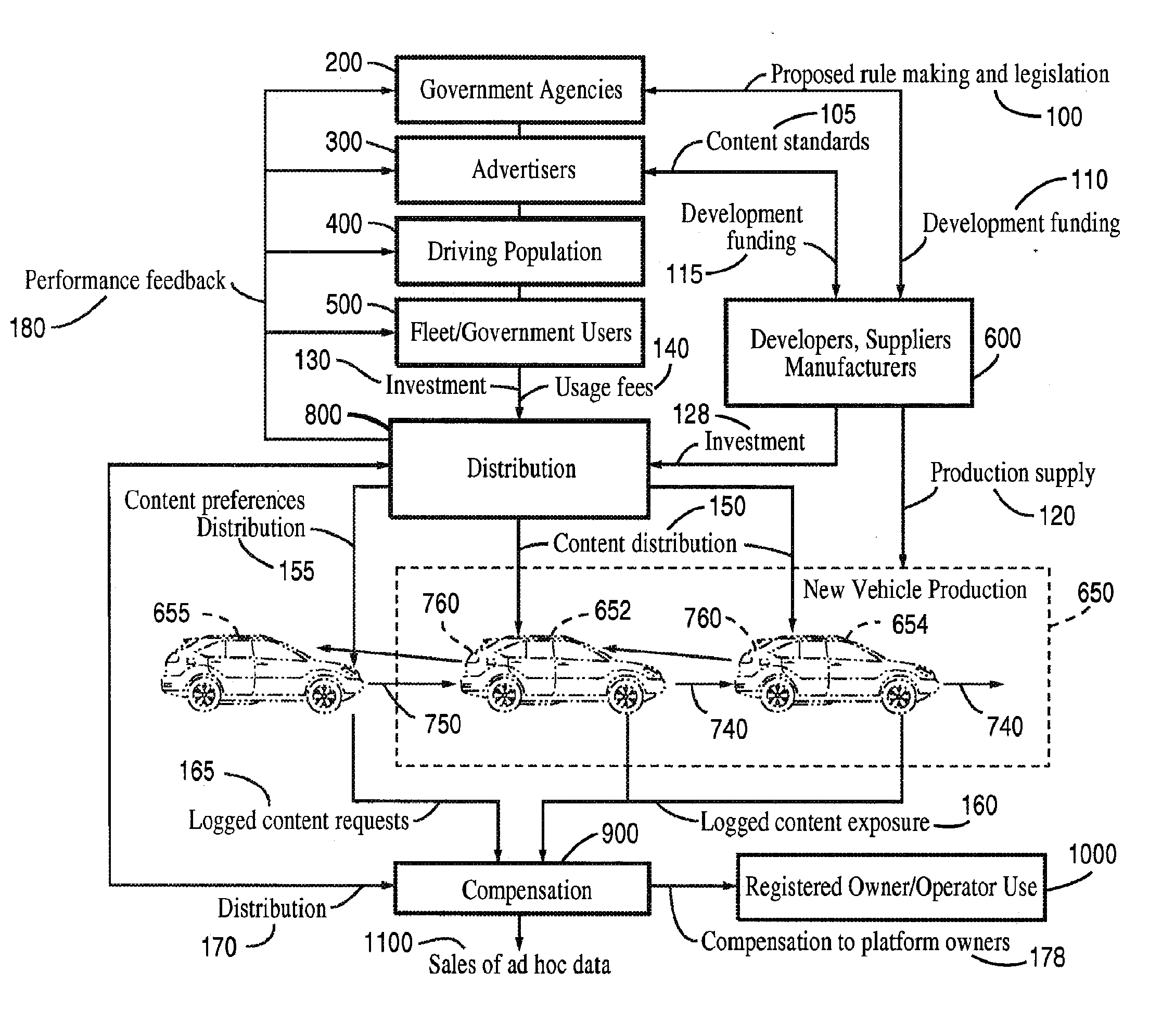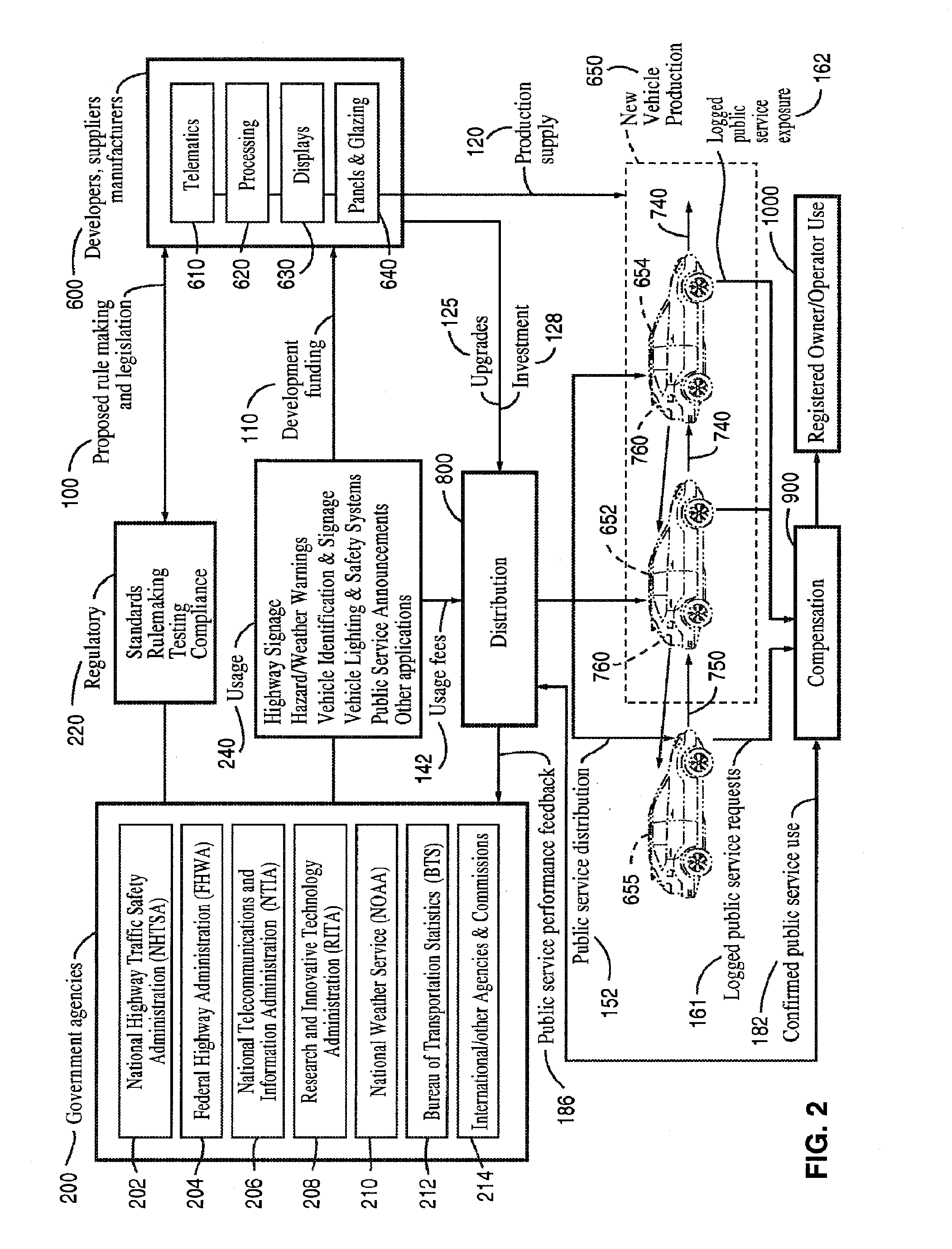System and method for obtaining revenue through the display of hyper-relevant advertising on moving objects
a technology of hyper-relevant advertising and revenue generation, applied in the field of effective advertising content, can solve the problems of misunderstanding of the risks of antiquated media plans, questioning which of these distractions may also pose a risk, and executives are beginning to recognize the amount of money being wasted on antiquated media plans, etc., to achieve the effect of confirming the delivery of content, measuring its effectiveness, and confirming in-field performan
- Summary
- Abstract
- Description
- Claims
- Application Information
AI Technical Summary
Benefits of technology
Problems solved by technology
Method used
Image
Examples
example 1
[0309]FIG. 28 is a diagram showing geo-specific content distribution. It depicts several city blocks with in a representative downtown area. Main Street is shown at 1280 and 1st street at 1200. The Convention Center is located at 1220. A McDonald's Drive-thru is shown at 1240, and a Hilton Hotel is shown at 1260. 3rd Street is a one-way street, as indicated by the arrow at 1284, and temporary road work is shown at 1250. In terms of content media buys, Apple Computer has purchased the several square block area surrounding the Convention Center, but only during visitation hours for the electronics show. This area is indicated at 1222. McDonald's restaurant, 1240, has a renewable lease for the city block area immediately surrounding its restaurant and the boundaries for this media area is indicated at 1242. However, McDonald's has also purchased media rights to the subsurface parking garage for the convention center on a 24 / 7 basis, such additional space being represented at 1244. Hilt...
example 2
[0334]FIG. 33 illustrates the interactions between moving and stationary objects at a typical city intersection and will help clarify two elements relating to the queuing and display of content on moving objects: (1) allocating timing for display through the use of the Intersection Clock 1800, and (2) specific methods of vehicle-to-vehicle viewing.
[0335]A traffic intersection is shown at 1700, bounded by pedestrian crosswalks, a configuration increasingly common in city and rural environments. 1705 indicates an eight lane north / south highway. 1710 represents an east / west highway with active cross traffic. Overhanging traffic light structures 1715 are shown in two places for the north / south corridor. Each of these carries a left turn signal 1720 aligned opposite and above the left turn lane, plus a green / amber / red signal light above through traffic lanes, plus an identical light on each corner, shown as 1725.
[0336]Note first the northbound vehicles marked A through L. In this first e...
example 3
[0349]Finally, a much more basic example of a preferred embodiment of the present invention is the incorporation of such a system into the family car. Bringing home an automobile with the present invention built in could be reminiscent of bringing home the first family television, video recorder, or computer of years past.
[0350]Dad decided it would be a family surprise—a new Lexus ‘Crossover’ car—rugged enough for family vacations, yet refined enough for the office and for mom to do lunch with her friends. It came in two models, one basic, the other with Lexus' new on-board ad display system, something the company called an “ad / hybrid.” Other than this, the models were identical. With financing, the slight increase in cost for the ad / hybrid was barely noticeable in the monthly payment, but the window sticker made it clear the car would produce handsome annual revenue for its owner, significantly offsetting the costs of its built-in ad display technology. On the sticker, this revenue...
PUM
 Login to View More
Login to View More Abstract
Description
Claims
Application Information
 Login to View More
Login to View More - R&D
- Intellectual Property
- Life Sciences
- Materials
- Tech Scout
- Unparalleled Data Quality
- Higher Quality Content
- 60% Fewer Hallucinations
Browse by: Latest US Patents, China's latest patents, Technical Efficacy Thesaurus, Application Domain, Technology Topic, Popular Technical Reports.
© 2025 PatSnap. All rights reserved.Legal|Privacy policy|Modern Slavery Act Transparency Statement|Sitemap|About US| Contact US: help@patsnap.com



